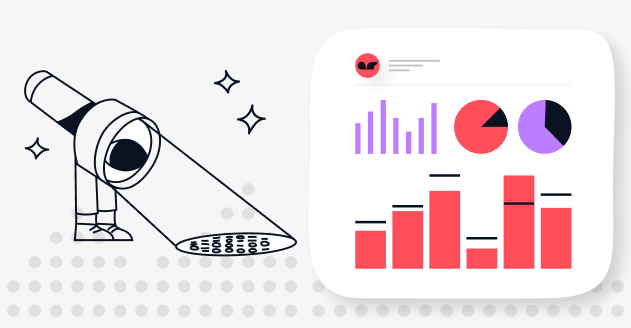Top 10 Best Practices for Implementing Data Lineage

Data lineage is the process of tracking the path of data documenting its origins and every step it takes before reaching its destination. This journey map is crucial, for individuals who work closely with data like data engineers and analysts as it ensures the trustworthiness and reliability of the data. Essentially data lineage provides insights into the history of the data creating a record that confirms its authenticity.
By utilizing data lineage users can determine pieces of information.
- The original source of the data.
- The potential insights that can be extracted from the data.
- The current. Status of the data.
- Any updates or modifications made to the data.
Data lineage plays a role in both processing and managing data operations. Therefore it deserves attention in order to achieve outcomes with regards, to handling and utilizing valuable datasets.

Top 10 best practices for data lineage
Here are the top 10 best practices for implementing data lineage successfully -
1. Understanding Data Lineage Basics
Data lineage traces where your data originates, the routes it travels, and its final destination. It helps businesses understand and visualize data flows from source to destination.
Plus, knowing your data’s source and transformation can increase confidence in decision-making. In essence, data lineage helps ensure you can trace your data's journey and validate its reliability.
2. Setting Clear Objectives
Before getting on any journey, you need a clear destination in mind. In the world of data lineage, this means defining clear-cut goals. Do you aim to enhance data quality, adhere to data regulations, or simply understand how your data moves? Identifying these objectives early sets the direction for your data lineage implementation and ensures resources are utilized effectively.
3. Stakeholder Engagement
Data lineage isn’t only an IT endeavor, It touches various departments, from finance to marketing within an organization. Engaging stakeholders ensures everyone understands the importance and implications of data lineage information. When all involved parties recognize the value and benefits, the implementation process becomes more collaborative and cohesive.
4. Choosing the Right Data Lineage Tools
Using a sword where a needle might work will never yield anything good. Similarly, picking the appropriate data lineage tool is essential. Instead of going with the latest tool that everyone is talking about, analyze your organization's specific needs.
Consider factors like scalability, user-friendliness, and integration capabilities, as it is not about having a tool; it's about having the right one.
5. Data Source Integration
Merging distinct data sources is like blending diverse ingredients to create a single delicious dish. Without proper integration, the outcome is disjointed, similar to having separate puzzle pieces that don't fit together. By consistently capturing metadata, you're essentially creating a common language that allows these diverse data sources to speak cohesively.
This unified approach ensures that, even if data is coming from varied origins, when viewed together, they narrate a seamless and comprehensive tale, eliminating confusion and fostering clarity.
6. Incorporating Automated Data Discovery
Time is precious and automating data discovery can save hours of manual tracing. Leveraging automation tools can identify patterns, anomalies, and connections that might be overlooked manually. It’s like having an eagle-eyed assistant who never tires, ensuring every data connection is mapped out.
7. Maintaining Documentation and Metadata
Documentation of data plays a crucial role, It records data's journey, from origin to its present state, capturing every twist and turn. By meticulously recording details, from source alterations to format shifts, you get a clear map of data's evolution.
Consistent documentation acts as a trustworthy guide, ensuring no detail is lost in the annals of data history.
8. Implementing Data Lineage Standards
Without a proper set of guidelines for naming, categorizing, and managing data, the data world would be in disarray. Implementing consistent data lineage standards ensures that everyone, regardless of their department or role, is on the same page.
It's similar to establishing a universal language for a global team. With shared standards, misunderstandings are minimized, operations run smoother, and the data narrative remains coherent and unified for all users.
9. Regularly Monitoring & Updating
Just as cities evolve with new roads and landmarks, data landscapes constantly shift due to business changes, integrations, or updates. To keep data lineage insightful, it's crucial to frequently review and refresh it, think of it as updating the software on your GPS.
Using outdated data maps can lead to misinformed decisions, much like relying on old GPS maps might send you down a closed road. Periodic checks ensure that your data lineage is always in sync with the current data landscape. This guarantees precise and reliable navigation through your data journey.
10. Training & Skill Development
Remember, tools don’t operate themselves, you'll have to equip your team with the skills and knowledge they need. Regular training sessions, workshops, and updates on data lineage trends ensure your team remains ahead of the curve. Knowledge is power, and a well-informed team is a powerful asset.
Understanding the Value of Data Lineage
Data lineage isn't just a fancy term that data folks use to sound cool, Its value extends far and wide across an organization:
1. Trace Your Data’s Footsteps
Data lineage offers a comprehensive blueprint of your data's journey. Knowing where the was first discovered, the path it took, and any transformations along the way allows you to piece together the full story.
This clarity is essential not just for analytics but for a number of different tasks where understanding the data’s history ensures accurate interpretation and decision-making.
2. Peek Behind the Curtain
Data, in its raw form, often feels abstract and detached. But what if you could look into its past and understand its relationships? That’s what data lineage brings to the table.
By revealing the source and the interconnections of data, it offers users the ability to gauge its authenticity and reliability. This transparency ensures that when you use the data, you do so with full confidence in its validity.
3. Keeping an Eye on Regulations
Today, data isn’t just numbers; it’s an asset with legal and ethical implications. Data governance and regulatory bodies often require businesses to showcase the origin and transformation of their data.
Think of data lineage as a detailed logbook or a journal that documents every move of your data. With it, regulatory compliance becomes less of a hassle and more of a structured process, preventing potential legal pitfalls.
4. Steering through Changes
Change is the only constant, especially in the digital domain. Whether it’s adapting to new software, migrating systems, or integrating data sources, changes can be tricky. Data lineage acts as a guiding light in such scenarios. With a clear view of data history and transformations, migrations become less about guesswork and more about informed decision-making, ensuring minimal disruptions and errors.
5. Time is Money
You might have heard the phrase, “Time is money,” and it continues to be true in the data world too. Searching for data origins, verifying its authenticity, or mapping data transformations without data lineage can be time-consuming, and costly.
By having a ready reference (thanks to data lineage), businesses can speed up these processes. Moreover, the saved time can be redirected towards more innovative and strategic objectives, unlocking new potential uses and insights from the data assets.
Conclusion
Implementing data lineage is more than a technical endeavor; it's a journey toward understanding and trusting your data. With the right practices and a committed team, you can navigate this journey smoothly, ensuring clarity and confidence in every data-driven decision.
You might also like
Contactez-nous pour en savoir plus



« J'aime l'interface facile à utiliser et la rapidité avec laquelle vous trouvez les actifs pertinents que vous recherchez dans votre base de données. J'apprécie également beaucoup le score attribué à chaque tableau, qui vous permet de hiérarchiser les résultats de vos requêtes en fonction de la fréquence d'utilisation de certaines données. » - Michal P., Head of Data.




.png)



